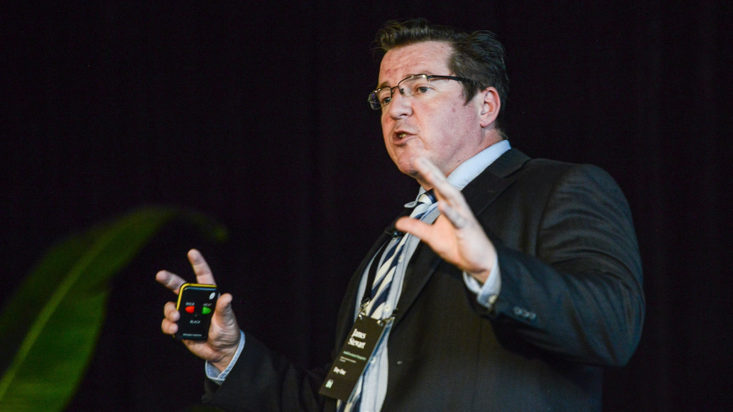‘You can’t just ride the trend’
The “green” future is covered in dirt. As the proposed shift toward carbon targets and decarbonisation continues apace, it is increasingly clear that the shift will rely heavily on old-fashioned commodities.
These range from the well-known metals, including lithium and copper, to the lesser lights in nickel and manganese.
Presenting on the topic ‘Eyes on the prize’ at the Inside Network’s inaugural Equities and Growth Assets Symposium, James ‘Jimmy’ Stewart highlighted the risks that investors face by assuming that getting the ‘theme’ right is a guarantee of long-term returns.
As portfolio manager of the long-short global resources strategy at Ausbil, Stewart has a solid track record in the last three years, delivering strong performance despite massive volatility. The premise of his approach is to “make money in up markets and make money in down markets,” the only way he knows how, “by looking at the fundamentals.”
According to Stewart, “top-down themes set the basis, but bottom-up companies drive the returns.”
Referring to everything from renewable energy to iron ore and oil, he draws on his experience in 2020 when the group was positive on the electrification theme, but maintained short positions due to the valuations of a number of major companies.
Iron ore, he suggests, faces a similar issue today. After enjoying an incredibly powerful tailwind of surging demand and prices, “a strong thematic trade” as he described it, stocks in the sector have become “overvalued” and more difficult to own.
The story is similar in the electrification and renewable sector, with commodities ranging from nickel, manganese, silver, aluminium, copper and lithium key to the production of batteries, electric vehicles and virtually everything else considered “green.”
“The rubber is hitting the road” after what has been a long period of stagnation for electric vehicle and battery demand.
Yet since 2016 lithium carbonate prices are still 20 per cent off their highs, while the companies that produce these key commodities, like Pilbara (ASX: PLS) and Galaxy (ASX: GXY) have seen incredible growth.
According to Ausbil’s research, the outlook for commodity demand in key electric vehicle elements is as good as ever. The firm forecasts as much as 1360 per cent growth in demand for lithium through to 2030, 840 per cent growth in graphite demand and 240 per cent for Nickel. Commenting on suggestions that lithium is everywhere, he cites evidence that few buyers can actually get their hands on any.
Nickel was highlighted as one of the standout opportunities, with demand from batteries alone expected to increase fifteenfold before 2030, well ahead of lithium and cobalt.
“The theme is coming,” he says, while warning that you “can’t just ride the theme,” but need to focus on the companies or risk losing significant value.










